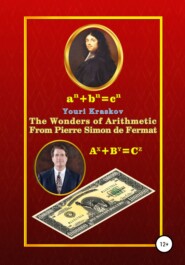
Полная версия:
The Wonders of Arithmetic from Pierre Simon de Fermat
It would seem, what might be unusual here? Such unresolved problems in science are simply cannot be counted. But the fact of the matter is that the author of the theorem himself announced that he had the "truly amazing proof", but science cannot get although any for 350 years!!! It is only in the mass consciousness the author of the theorem is a real triumphant, but for science it’s like a bone in the throat. Here are already present obvious signs of illness. What kind of science is this, which for hundreds of years cannot to solve the school task? It would be OK if only one this task, but science cannot also recognize the obvious fact that it does not have the basic knowledge necessary for this, which Fermat discovered yet in those distant times.
Science lost not only the ability to comprehend, but also to orient in the events around it. How is it so that we have no knowledge, there are a whole mountain of them! This is for sure, “knowledge” was accumulated so many that to understand and assimilate all this wealth has become beyond human strength and capabilities. But in fact, everything is just the opposite. There is a very noticeable lack of real knowledge and the most part of all what has been accumulated, is empty grinding of many problems, which either have no solutions at all or else worse when dubious ideas are taken as the initial ones, on which mind-blowing theories are built, what naturally generating all sorts of paradoxes and contradictions. Then scientists are trying with all their might to overcome them, but for some reason if something works out for them that only with the help of even more mind-blowing theories.
Such an unusual character of our perceptions concerning to science, can cause a very negative reaction. But here we can confess that we had very good reasons for this because we managed to look in those very “heretical recordings” of Fermat. For greater persuasiveness we directly here will show one of the examples of our capabilities and accurately reproduce the real text of the most intriguing recording of the Fermat's Last theorem in the margins of Diophantus' "Arithmetic", which instance did belong to the author and disappeared unknown whither. So, in this place (see Pic. 5), we gain sight of several notes to the task under the number VIII made in Latin at different times. In translation they look like this:
1st entry: However, it is impossible to decompose C into two other C or QQ into two other QQ. Both proof by the descent method.
2nd entry: The second case is impossible because the number 2aabb is not a square.
3rd entry: New solution to the Pythagorean equation AB=2Q.
4th record: It may be computed as many numbers aa+bb–cc=a+b–c as you like.
5th entry: And in general, it is impossible to decompose any power greater than 2 into two powers with the same index. Proof by a key formula method.
6th entry: However, you can calculate as many numbers C+QQ=CQ as you like.
Now this restored text in margins of book can be compared with the text published in the edition "Arithmetic" by Diophantus with Fermat’s comments in 1670 (see Pic. 3 and at the end of Pt. 4.2):
However, it is impossible to decompose a cube into two cubes or a biquadrate into two biquadrates and generally any power greater than two, into two powers with the same index. I have discovered truly amazing proof of this, but these margins are too narrow to put it here.
But then it turns out the recovered text is not at all the same that was published. Well, of course not that one! It's clear, if you publish the real text of the remarks made in the margins of the book, then no one will understand anything because that who writes them, does it not for someone, but only for himself. On the other hand, it is obvious that the content of the recordings in the margins is so that they could not be made in the course of reading the book and are the result of a very voluminous and many years of work that was done separately. It is obvious that in addition to these short notes there is yet a whole bunch of papers in draft and finishing versions with brief or detailed explanations. These papers have not always been prepared for printing and they still need to be brought to the desired state. Hence it is clear why the text was edited accordingly for publication in 1670. From the real notes all was removed that reveals the method of proof and the sequence of solving individual tasks, which have eventually led to the discovery of the FLT.
The restored remarks follow in chronological order and may diverge in time over years. The margins' records of the book were made after they were prepared separately, but it was not intended that they be published in the same view. On the contrary, in the final formulation of the FLT everything that could be concealed from the history and components of this brilliant scientific discovery, was completely removed. Only the final result has been remained, which turned out to be beyond the powers of all subsequent science right up to the beginning of the XXI century!
If this reconstruction of the original FLT recording on the margins of the book appeared 30 years earlier, it would have caused a quite stir in the scientific world since the sixth entry develops (!!!) this theorem to the general case with the different of power's indexes! However, this stir did nevertheless take place 25 years ago, and again it was caused not by a professional, but by an amateur interested in FLT with his conjecture corresponding to the restored sixth entry. Of course, to believe in all this is not easily, but also to invent such a thing is also hardly possible. Now we have to explain in more detail these restored entries in the margins and this will be done in the next points of our work and the same senator who started this whole story, will help us in this.
2. The History of Delusions
An unprecedented succession of failures, wrecks of secret hopes and defeats in the protracted for centuries storming of an impregnable fortress under name the Fermat's Last Theorem, turned into a such nightmare for science that even its very existence have been questioned. Like the fierce plague epidemic, the FLT not only deprived the minds of numerous amateur fermatists, scientists and unrecognized geniuses, but also very much contributed to the fact that the whole science was plunged into the abyss of uncontrollable chaos.
Pic. 12. Andrew Wiles
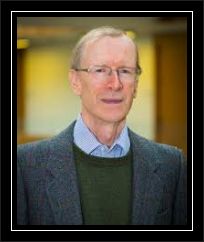
Already three and a half centuries have passed since the first publication of the FLT and twenty-five years after it was announced that in 1995 this problem was allegedly solved by Professor Princeton University USA Andrew Wiles.6 However, once again it turned out this “epochal” event has nothing to do with the FLT!7 “The proof” of Wiles rests solely on the idea proposed by the German mathematician Gerhard Frey. This idea was rated as brilliant, but apparently only because that it was an elementary and even very common error!!!
Pic. 13. Gerhard Frey
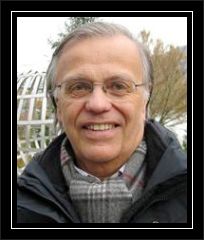
Instead of proving the impossibility of the Fermat equation an+bn=cn in integers for n>2 here is proven only its incompatibility in the system with the equation y2=x(x−an)(x+bn). In a similar way any nonsense can be proven. If the same work would be presented by one of the students, any of the professors would quickly bring him to clean water pointing to the obvious substitution of the subject of proof. Nevertheless, this super sensational news with great fanfare was noted in the world's leading media. The most influential newspaper of the USA “The New York Times” has been reported this right on the front page … in whole 2 years before the appearance of the “proof” itself!!! Andrew Wiles as the author of the "proof" became a member of the French Academy of Sciences and the laureate of as many as 18 of the most prestigious awards!!! To cover this momentous event, the British broadcaster BBC released an enthusiastic film and also it was invited the writer Simon Singh who published a book in 1997 titled “The Fermat's Last Theorem. The story of a riddle that confounded the world's greatest minds for 358 years”.
Pic. 15. Simon Singh
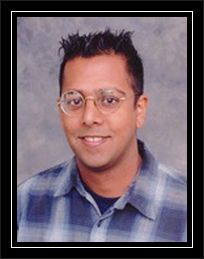
Pic. 14. “The New York Times” of 06/24/1993 with an Article About Solving the FLT Problem
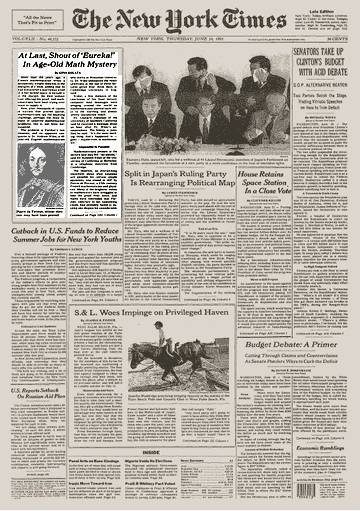
If Singh independently was preparing this book, then he would have so many questions that he would not have them managed for 20 years. Of course, he was helped in every way by the very heroes-professors having glorified in the BBC film, therefore the book became a success and it is really interesting to read it even to those who know about mathematics only by hearsay. The first thing that immediately catches your eye, is the fact that in the book it was made an arithmetic error (!) and not somewhere, but in its very name! Indeed, it is well known that “the greatest minds” could not know anything about the FLT before 1670 when its wording first appeared in a book published by Fermat’s son Clément Samuel “Arithmetic” by Diophantus with comments by K. Bachet and P. Fermat (see Appendix VI Pic. 96).8 But then it should be not 358 but 325 years and it turns out that Singh simply did not notice the error?
However, don't rush to conclusions! This is not the book's author error and not at all accidental. These same professors vividly told Singh that supposedly back in 1637 9 Fermat himself had noticed an error in his proof, but simply forgot to strike out recording of this theorem in the margins of the book. Who had invented this tale is unknown, but many scientists perceived it as a known fact and repeated time after time in their works. One can understand them because otherwise we could believe that Fermat turned out to be smarter than all of them! When Andrew Wiles said (https://www.pbs.org/wgbh/nova/article/andrew-wiles-fermat/):
“I don't believe Fermat had a proof” – this opinion was not new at all because many reputable scientists have repeated this many time. However, this is clearly against logic. It turns out that Fermat somehow managed to formulate an absolutely not obvious theorem without any reason whatsoever.10
Another contradiction in Singh’s book is a clear discrepancy between the documentary facts and the assessments of Fermat as a scientist by consultants. It is necessary to pay tribute to Singh in that he is in good faith (although not fully) outlined that part of the Fermat's works, which relates to his contribution to science and is confirmed documental. Especially it should be noted that arithmetic is called in his book "the most fundamental of all mathematical disciplines". Only one listing of Fermat's achievements in science is enough to be sure that there were only a few scientists of such a level in the entire history of science.
But if this is so, then why was it necessary to think out something that is not confirmed by any facts and only distorts the real picture? This is very similar to the desire to convince everyone that Fermat could not prove the FLT since this is allegedly confirmed by historians. But historians received information from those mathematicians who did not cope with the Fermat’s tasks and could in this way express their discontent. Hence, it's clear how appear all the arguments taken from nowhere that Fermat was an amateur scientist, arithmetic attracted him only with puzzles, which he “invented”, FLT also was by him “invented” looking at the Pythagorean equation, and his proofs he did not want to publish because fear of criticism of colleagues.
That's what they really meant! Instead of the greatest scientist and founder of number theory as well as combinatorics (along with Leibniz), analytical geometry (along with Descartes), probability theory (along with B. Pascal), wave optics theory (along with Huygens), differential calculus (along with Leibniz and Newton), whose heritage was used by the greatest scientists in the course of centuries, suddenly a “lover” of puzzles appear, who only enjoyed the fact that no one could solve them. And since arithmetic is puzzles then this most fundamental of all sciences is relegated to the level of crosswords. Such a “logic” is clearly sewn with white threads and to be convinced of this, it is enough just to point out some well-known facts.
History has not retained any evidence that during the period life and activity of P. Fermat, someone has solved at least one of his tasks.11 This fact became the basis for opponents else in those times to compose all kinds of tales about him. In the surviving letters, he reported that he had already sent proofs to his respondents three times. But none of these proofs reached us because Fermat's letters recipients in eyes of posterity of course, did not want to look like they could not cope with simple tasks. Another indisputable fact is that the Fermat's personal copy of the book “Arithmetic” by Diophantus edited in 1621 with his handwritten comments in the margins, none of the eyewitnesses have ever seen!!! Well, now just a most curious picture turns out. Fermat’s critics seriously believe a witty Gascon joke that the Honorable Senator (apparently because of his lack of paper!) writes accurate and verified text of thirty-six Latin words in the book's margins, but are absolutely don't believe that he (the greatest scientist!) indeed had “truly amazing proof” of his own theorem.12
It is even difficult to imagine how these critics would have been amazed to find out that in fact Fermat had never dealt with the search for this proof since at that time he could not know what exactly is to be proven. But namely in the last sentence of the FLT wording, which had so much outraged them, there is a keyword directly indicated how he have solved this problem. It so happened that for centuries the science world vainly tormented itself in search of the FLT proof, but Fermat himself was never looked for it and simply had declared that he had it discovered!13
It is possible also to remind to opponents ingeminating about Fermat’s deliberate refusal to publish his works that for example, Descartes had received permission to publishing from Most Reverend cardinal Richelieu himself. It was impossible for Fermat and there is even a written (!!!) testimony about it (see text on P. Fermat’s tombstone: “Vir ostentationis expers … – He was deprived the possibility of publication …”. See Appendix VI Pic. 93 – 94). Nevertheless, even being in such conditions, he had prepared the publication of Diophantus’ “Arithmetic” with the addition of his 48 comments, one of which got a name the “Fermat’s Last Theorem”.
The publication was supposed to appear in honor of the historically significant event – the foundation of the French Academy of Sciences, in which preparation Fermat himself participated through the correspondence with his long-time colleague from the Toulouse parliament Pierre de Carcavy who became the royal librarian. The royal decree of the creation of the French Academy of Sciences was prepared by Carcavy and the all-powerful Finance Minister Jean-Baptiste Colbert submitting it to the signing by Louis XIV. However, the Academy of Sciences was established only in 1666 i.e. a year after the Fermat's death.
Mathematicians are very famous for how they are strict pedants, formalists and quibblers, but as soon as it comes to the FLT, all these qualities immediately disappear somewhere. Fermat's opponents ignoring well-known facts, called him either a hermit (this is a senator from Toulouse!) or a prince of amateurs (this is one of the founders of the French Academy of Sciences!), and this despite his contribution to science comparable to its importance only with a couple or triple of the most prominent scientists in the history of science!
They also did not fail sarcastically to point out that no one would have known about Fermat if the greatest mathematician of all times and peoples Leonhard Euler had not become interested in his tasks. But just this magic name has played a cruel joke with them. Their boundless belief in Euler's innovatory researches was too blind to notice that it was namely thanks to him science received such a powerful blow, from which it cannot recover up to now!
Mathematicians not only have believed Euler, but also warmly supported him that algebra is the main mathematical science, while arithmetic is only one of its elementary sections.14 Euler's idea was really excellent because his algebra, which gained new possibilities through the use of "complex numbers" was to be a most powerful scientific breakthrough that would allow not only to expand the range of numbers from the number axis to the number plane, but also to reduce the most of all calculations to solving algebraic equations. 15
The need for "complex numbers" mathematicians explained very simply. To solve absolutely any algebraic equations, you need (not so much!) to make the equation x2 + 1 = 0 become solvable. 16 In Russian this is called: "Don’t sew the tail to a mare"! This equation is not at all harmless since it has nothing to do with practical tasks, but undermines the fundamentals of science very substantially. Nevertheless, the devilish temptation to create something very spectacular on empty place turned out to be stronger than common sense and Euler decided to demonstrate the new mathematical possibilities in practice.
Pic. 16. Leonhard Euler
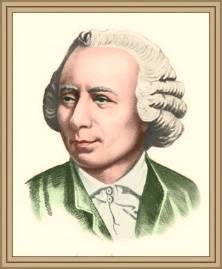
The FLT, which Euler could not to prove, would be perfect for demonstrating the possibilities of a new wonder-algebra. However, the result turned out to be more than modest. Instead of a general proof of FLT, only one particular case for the 3rd power was proven [8, 30]. More ambitious was seemed the proof of other Fermat’s theorem about the only solution in integers of the equation y3 = x2 + 2 [36] because it was a very difficult task and like FLT, none of the mathematicians could solve it. Despite the fact that the very possibility of solvability of any algebraic equation has not yet been proven, these Euler's demonstrations were perceived by hurrah. It only remained to find a solution to the problem called the “Basic Theorem of Algebra”. In 1799 the real titan of science Carl Gauss coped brilliantly with this task presenting proof even in 4 different ways!
The scientific community greeted all these "achievements" with a storm of applause while the unholy was also so glad that it is impossible to imagine.
Pic. 17. Karl Friedrich Gauss
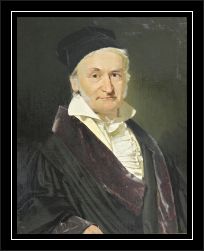
Yeah, this was need to be seen how the whole civilized scientific world has driven itself into a dead end! It is obvious that for science, which does not rely on arithmetic, there are no reasonable restrictions and the consequences will be sad – from the dominance of algebra, arithmetic will become so difficult that witlings will call it a science for the elitist mathematicians where they can demonstrate the sharpness of their mind! But the scientists themselves unsuspecting and full of the best intentions, continued to advance science forward to new heights, but so diligently that they either inadvertently or due to a misunderstanding… simply have lost the Fermat's Golden Theorem (FGT)! But this was one of the most impressive discoveries of Pierre Fermat in arithmetic, of which he was very proud.

Pic. 18. Joseph Lagrange
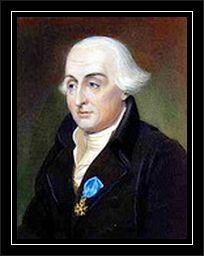
It was so happened that the third in the history royal mathematician Joseph Lagrange together with his predecessor the second royal (and the first imperial!) mathematician Leonard Euler, have proven in 1772 only one special case of FGT for squares and became famous for all the world. This remarkable achievement of science was called the “Lagrange's Theorem about Four Squares”. Probably it is good that Lagrange didn’t live after two years until the moment when in 1815 still very young Augustin Cauchy presented his general proof of the FGT for all polygonal numbers. But then suddenly something terrible happened, the unholy appeared from nowhere and put his "fe" in. And here isn't to you any world fame and besides, you get complete obstruction from colleagues.

Pic. 19. Augustin Cauchy
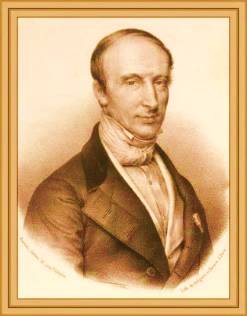
Well, nothing can be done here, academicians did not like Cauchy and they achieved that this general proof of the FGT was ignored and did not fall into the textbooks as well as no one remembers the Gauss' proofs of 1801 for triangles and for the same squares, nevertheless in the all textbooks as before and very detailed the famous Lagrange's theorem is given. However, after Google published a facsimile of the Cauchy proof of FGT [3], it became clear to everyone why it was not supported by academics (see pt. 3.4.2).

Pic. 20. Marie-Sophie Germain
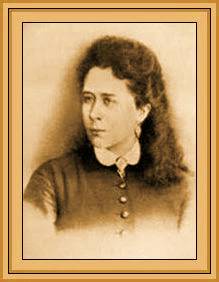
In the meantime, scientists from around the world inspired by these grand shifts, have so perked up that they wanted overcome the very FLT! They were joined by another famous woman very well known among scientists and mathematicians Marie-Sophie Germain. This talented and ambitious Mademoiselle proposed an elegant way, which was used by at once two giants of mathematical thought Lejeune Dirichlet and Adrien Legendre to prove … only one special case of FLT for the fifth power.
Another such giant Gabriel Lame managed to do the almost impossible and get proof of the highest difficulty … of another particular case of FLT for the seventh power. Thus, the whole elitist quad of the representatives from the high society of scientists was able to prove whole two (!) particular cases of FLT [6, 38].

Pic. 21. Lejeune Dirichlet
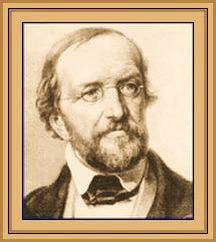
Pic. 22. Adrien Legendre
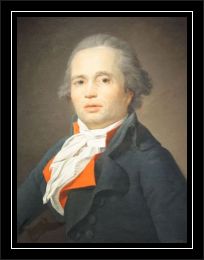
Pic. 23. Gabriel Lame
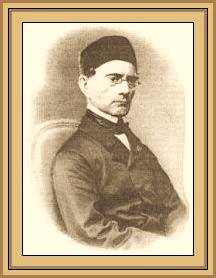
This result could have been proud since even Euler was also able to prove only two particular cases of FLT for 3rd and 4th powers. In the proof for the 4th power he has applied the descent method following exactly the recommendations of Fermat (see Appendix II). This case is especially important because its proof is valid for all even powers i.e. to obtain a general proof of FLT only odd powers can be considered.
It should be noted that namely Euler has solved (and even significantly expanded!) almost all the most difficult Fermat's tasks and if not for him, then the name Fermat alone could cause real chills to mathematicians. But just not to Sophie Germain who was not at all satisfied the situation with the unproven FLT and she even ventured to suggest that Gauss himself should take up this task! But he simply waved away her replying that the FLT is of little interest to him and such statements, which can neither be proven nor refuted can be found as many as you like.
Of course, Gauss himself would be happy to serve this lady, but if he could do this then it would not need to persuade him. For example, with the help of the “Deductions' arithmetic” developed by Gauss, the prototype of which was the “The Fermat's little theorem”, it was clearly shown how may be to solve the most difficult problems of arithmetic effectively. In particular, only Gauss managed to find a solution to the Fermat's task of calculating two the only squares, the sum of which is a given prime number of types 4n+1 [11, 25].
A characteristic feature of Gauss is his dislike for dubious innovations. For example, he could hardly imagine himself the creator of the geometry of curved spaces. But when he established that such geometry could take place and not contain contradictions, he was very puzzled by this. He was sure that his find could not be of practical use due to the absence of any real facts confirming something like that. However, he quickly found a good way out – he just helped to publish this discovery to his Russian colleague Nikolai Lobachevsky and have done it so skillfully that no one was even surprised when a Russian professor and rector of Kazan University have published a work on non-Euclidean geometry … in Berlin and in German! In the future, Gauss' doubts were confirmed. Followers appeared and flooded science with a whole bunch of similar "discoveries".



